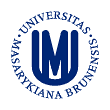



Prune belly syndromeis characterized by the trias: deficient abdominal wall musculature, cryptorchidism and urinary tract anomalies (megavesica, hydronephrosis, renal dysplasia). Smooth distended abdomen is seen in a fetus, flank abdomen with wrinkled redundant skin is seen in a newborn. Anatomic obstruction (urethral atresia, stenosis, kinking) can be identified in some cases. In the rest functional or transient obstruction is suspected. Prostatic maldevelopment is also typical. Prune belly syndrom was initially described in males only but similar phenotype can be seen in females with urethral agenesis.
Hydronephrosis:
 Hydronephrosis, Macro, autopsy (73046)
Hydronephrosis, Macro, autopsy (73046)
Prune belly syndrome, fetus:
 Distension of the abdominal wall, obstruction of urinary pathways, Macro, autopsy (72056)
Distension of the abdominal wall, obstruction of urinary pathways, Macro, autopsy (72056)
Atresia of the urethra, ultrasound video:
 Atresia of the urethra, megavesica, Ultrasound, video (74021)
Atresia of the urethra, megavesica, Ultrasound, video (74021)
Atresia of the urethra, facies Potteri:
 Atresia of the urethra, Potter's sequence, Macro, autopsy (74348)
Atresia of the urethra, Potter's sequence, Macro, autopsy (74348)
 Atresia of the urethra, Potter's sequence, Macro, autopsy (74349)
Atresia of the urethra, Potter's sequence, Macro, autopsy (74349)
 Atresia of the urethra, Potter's sequence, Macro, autopsy (74350)
Atresia of the urethra, Potter's sequence, Macro, autopsy (74350)
 Atresia of the urethra, Potter's sequence, Macro, autopsy (74351)
Atresia of the urethra, Potter's sequence, Macro, autopsy (74351)
 Atresia of the urethra, Potter's sequence, Macro, autopsy (74352)
Atresia of the urethra, Potter's sequence, Macro, autopsy (74352)
 Atresia of the urethra, Potter's sequence, Macro, autopsy (74353)
Atresia of the urethra, Potter's sequence, Macro, autopsy (74353)
 Atresia of the urethra, Potter's sequence, Macro, autopsy (74354)
Atresia of the urethra, Potter's sequence, Macro, autopsy (74354)